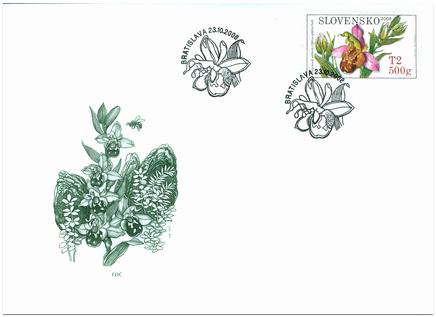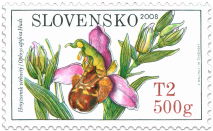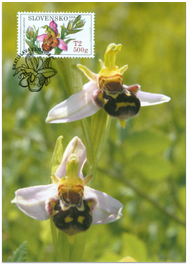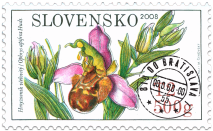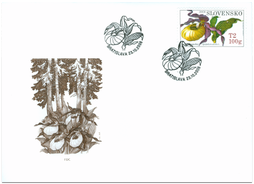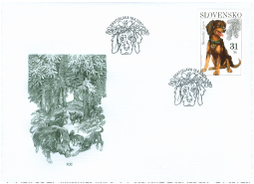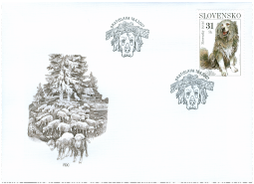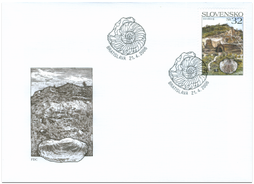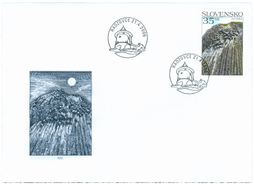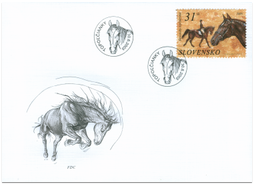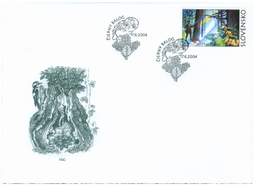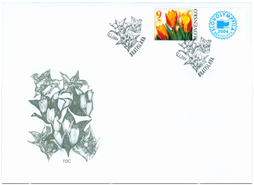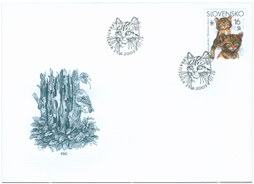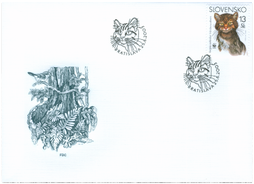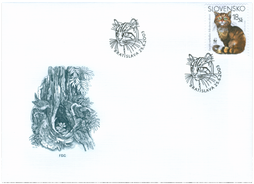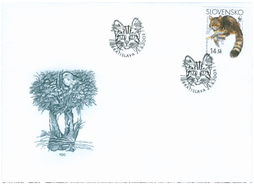FDC 432 Date of issue
23.10.2008 Sell price
1.20 €
T2 500 g responds to the rate of postage of the 2nd class up to 500 g - domestic servis. © Slovak Post, 2008 The Ophrys genus includes about 70 species occurring mainly in the Mediterranean, but also in South-East Asia. In Slovakia, this genus is represented by five species, which are amongst the scarcest species of orchids. The plant has ovoid tubers with a rose-like bundle of grey-green lanceolate-shaped leaves sprouting from the stem just above the ground which also survive winters. Distinct flowers - numbering from three to ten - usually come out in June or July and sprout at the apex. A blossoming orchid is the motif of this stamp. Interestingly, the labellum inside the flower bud is directed upwards. Once the flower opens, it turns upside-down to the normal position. The outer whorl has white, rose and rose-violet sepals with green veins in the centre. The inner whorl petals are shorter, comma-shaped, and have the same colour as the sepals, and may also be yellow-green. The labellum is distinct and may take on various shapes and colours depending on the species. The variability of labellum is typical for the whole genus. It is in fact the colour of the labellum that resembles an insect and forms the basis for scientific nomenclature of a number of individual species. The variability of labella imitates females and attracts various insect males. Deceived male insects collect pollen on their heads or abdomens when trying to copulate and land on another flower, thereby effecting pollination. Ophrys apifera is the only representative of this genus capable of self-pollination, which means that it does not need to attract insects and rely on pollinators. The occurrence of this decorative species in Slovakia is rare as these locations represent the flower’s most northern habitats. It usually grows in the warmer parts of Western Slovakia, in meadows and shrubby slopes, thin forests and typically on limy soils which extend from lowlands to upland ranges. The species has already gone extinct in many of these locations due to the destruction of biotopes and overgrowing. In addition to the conservation of individual localities, the species is also protected by law and listed in the Red List of Endangered and Scarce Plants of Slovakia as well as the Slovak Red List of Plants and Animals. It is also subject to conservation under the CITES convention. Jaromír Kučera
Show lessSimilar products
FDC 431 Date of issue
23.10.2008
FDC 395 Date of issue
18.04.2007
FDC 394 Date of issue
18.04.2007
FDC 373 Date of issue
21.04.2006
FDC 374 Date of issue
21.04.2006
FDC 361 Date of issue
30.06.2005
FDC 330 Date of issue
17.06.2004
FDC 320 Date of issue
12.02.2004
FDC 301 Date of issue
25.06.2003
FDC 299 Date of issue
25.06.2003
FDC 302 Date of issue
25.06.2003
FDC 300 Date of issue
25.06.2003
© 2024 POFIS - Postal philatelic service. All rights reserved

